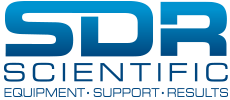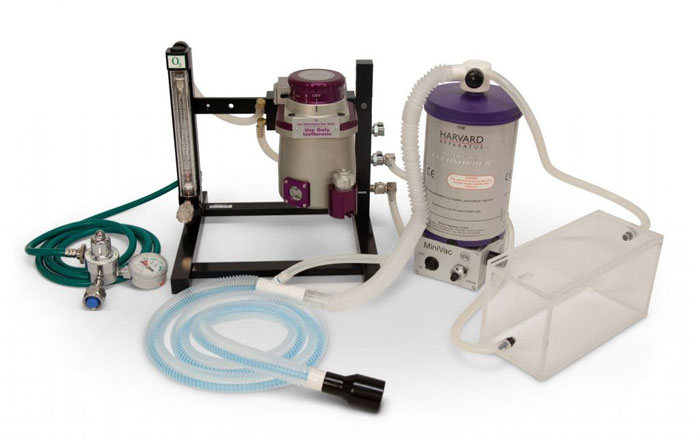Gaseous Anaesthesia
Why Gaseous Anaesthesia for Laboratory Animals?
Injectable anesthesia is accomplished by the delivery of anesthetic drugs via injection into one of several potential spaces: intraperitoneal (i.p.), subcutaneous (s.c.), intravascular(i.v.), and intramuscular (i.m.).
Drug injection into any of these sites ultimately results in distribution of the drug into the bloodstream and to the central nervous system receptors to carry out their activity.
Inhalant anesthesia is accomplished by the delivery of a volatile anesthetic by way of oxygen as a carrier gas. This is contingent upon delivering an amount of volatile compound that causes anesthesia, and this amount coincides with the concentration of drug delivered to the lung alveoli.
The amount of volatile agent required to inhibit movement in 50% of recipients is termed the minimal alveolar concentration (MAC) and multiples of the MAC are used to achieve anesthesia.
The volatile agent is vaporized within the anesthetic machine and carried by 100% oxygen; thus, the animal receives both anesthetic and oxygen during inhalant delivery.
Each method has its own set of advantages (and disadvantages):
- Injectable:
-
- Duration is good for quick procedures
- No special equipment required (needles, syringes)
- Reversible agents available
- Inexpensive
- Simple technique
- Gaseous/Inhalant:
-
- Duration is short but lengthy procedures can be accommodated
- Rapid onset and recovery from anesthesia
- Easy to control depth of anesthesia
- Minimal metabolism/secondary products formed
Source: Adams, S. and Pacharinsak, C. 2015. Mouse Anesthesia and Analgesia.Curr. Protoc. Mouse Biol.5:51-63
Whichever technique is selected, monitoring is also a wise decision to make. SDR Scientific has a range of anaesthetic monitoring and supporting equipment. For more information on monitoring, pls click here (link to SDRS Website) and supporting equipment (pls see here)
In terms of Gaseous Anaesthesia, SDR Scientific has partnered with Harvard Biosciences to provide a quality range of equipment suitable for researchers and veterinarians alike (these systems are not suitable for human use).
Harvard Bioscience’s complete anaesthesia systems, suitable for small rodents, are based on what researchers are using in their laboratories. These preconfigured packages ensure you have all the parts, regulators, tubing and connectors you need to get started right away.
However, if you do not see a combination that is suitable for your needs, a unique system can be created for you.
Select from:
- Tabletop Systems with Passive Scavenging
- Mobile Systems with Passive Scavenging
- Tabletop Systems with Active Scavenging
- Vaporizers
- Passive Scavenging
- MiniVac Active Scavenging
Key Features & Benefits:
- Flexible and adaptable to suit your exact needs
- Quality, reliable systems
- Off the shelf systems, or custom configured
- Compatible with a wide range of monitoring equipment for your peace of mind
The Gaseous Anaesthesia system makes it easy to control the depth of anesthesia.
Links to any references, papers


